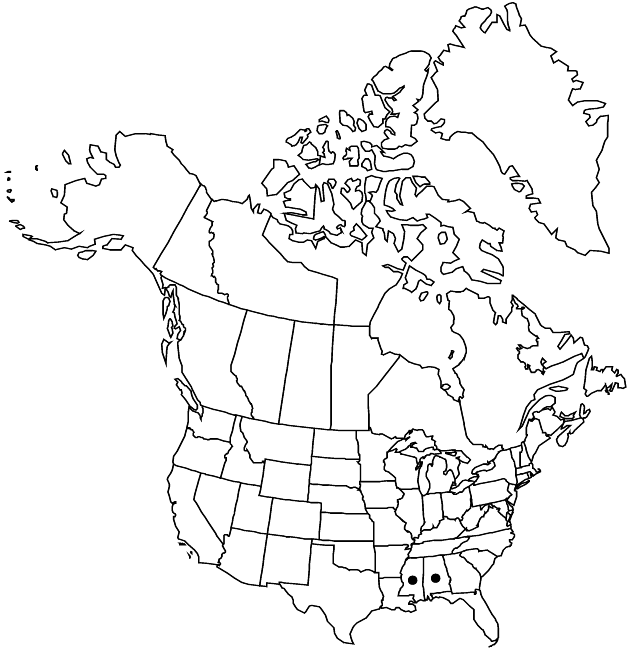Pluchea yucatanensis
Phytologia 67: 160. 1989.
Perennials, 20–60 cm; probably fibrous-rooted. Stems ± stipitate or sessile-glandular, otherwise glabrous. Leaves sessile; blades (leathery, slightly succulent, shiny) oblong-obovate to oblong-oblanceolate or broadly lanceolate, 3–5 × (0.6–) 1.5–2 cm (bases subclasping and subauriculate), margins serrulate, faces ± stipitate or sessile-glandular, otherwise glabrous or distalmost minutely puberulent. Heads in corymbiform arrays. Involucres turbinate to campanulate, 5–6 × 4–5 mm. Phyllaries pink to lavender or cream, proximally stipitate or sessile-glandular, distally densely stipitate-glandular (outermost ovatelanceolate, lengths usually 1 times inner, rarely only 0.5 times inner). Corollas pink to lavender or cream or pinkish to rosy. Pappi persistent, bristles distinct.
Phenology: Flowering late May–Aug.
Habitat: Low woods
Elevation: 0–10 m
Distribution

Introduced; Ala., Miss., Mexico, Central America (Belize)
Discussion
Pluchea yucatanensis apparently is native along the Gulf and Caribbean coasts of Mexico and Central America, most commonly on the Yucatan Peninsula and in Belize. In the United States, it is known from collections made from 1896 to 1969 in coastal Alabama and Mississippi; it appears to be naturalized in the flora.
Pluchea yucatanensis is similar in habit and general appearance to P. foetida and P. baccharis and has been identified as both; the rosy tinted phyllaries and florets are more similar to those of P. baccharis. The glabrous, slightly thickened, shiny leaves and glabrous phyllaries are recognition traits for the species.
Selected References
None.